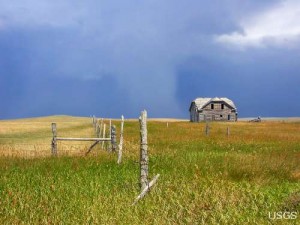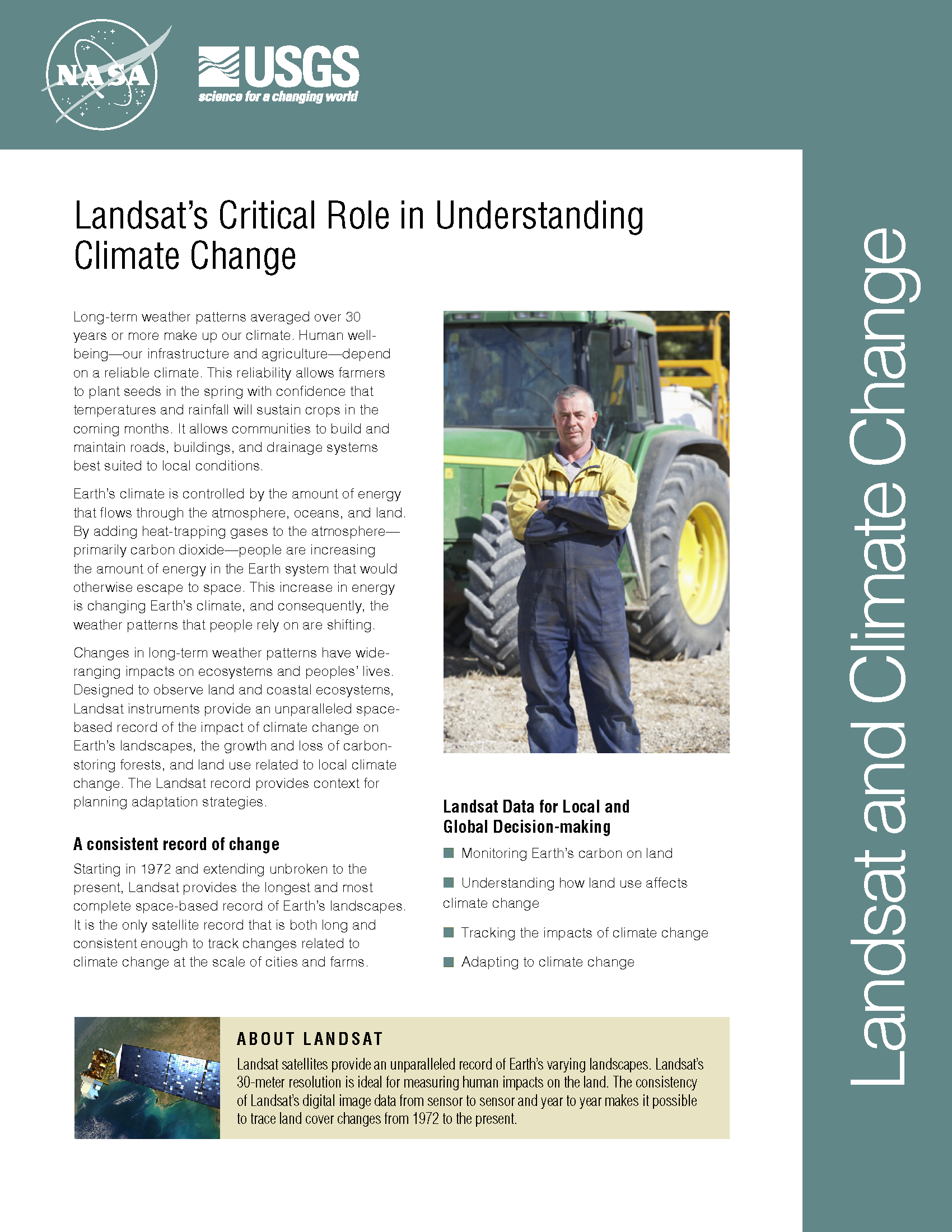Landsat's Role in Understanding Climate Change
Long-term weather patterns averaged over 30 years or more make up our climate. Human well-being—our infrastructure and agriculture—depend on a reliable climate. This reliability allows farmers to plant seeds in the spring with confidence that temperatures and rainfall will sustain crops in the coming months. It allows communities to build and maintain roads, buildings, and drainage systems best suited to local conditions. Earth’s climate is controlled by the amount of energy that flows through the atmosphere, oceans, and land. By adding heat-trapping gases to the atmosphere—primarily carbon dioxide—people are increasing the amount of energy in the Earth system that would otherwise escape to space. This increase in energy is changing Earth’s climate, and consequently, the weather patterns that people rely on are shifting. Changes in long-term weather patterns have wide-ranging impacts on ecosystems and peoples’ lives. Designed to observe land and coastal ecosystems, Landsat instruments provide an unparalleled space-based record of the impact of climate change on Earth’s landscapes, the growth and loss of carbon- storing.

Modeling a Changing American Landscape
Land change is a signature activity of human civilization. Since the dawn of history, people have purposefully converted natural landscapes to human-dominated areas. Typical motivations for land change are cultivation (e.g. slash-and-burn fields, rice paddies, modern farms); occupation (villages, cities, housing developments); and other cultural and economic pursuits (roads, schools, airports).
A Closer Look at Old-Growth Forest Loss in Indonesia
A group of researchers from the University of Maryland, the Indonesian Ministry of Forestry, and the World Resource Institute joined forces to remedy the lack of consensus about the amount of old-growth forest clearing occurring in Indonesia.
Insights Provided by New Compendium of Land Cover Mapping Satellites
A compendium of civilian satellites with the potential to image global land surfaces has been compiled by Alan Belward and Jon Skøien from the Land Resource Management Unit of the European Commission’s Institute for Environment and Sustainability. Results of this work were published online on April 28, 2014 in the Journal of Photogrammetry and Remote Sensing.
Glacier Monitoring in Nepal to Help Locals
A recently published report gives a comprehensive look at the glaciers of Nepal over the last three decades, at ten year increments (1980, 1990, 2000, and 2010). The information was derived from Landsat and Shuttle Radar Topography Mission (SRTM) data in order to provide a clear view of changing glacier dynamics in the region.
Nearly 200,000 Glaciers Mapped for Better Sea Level Rise Estimates
An international team led by glaciologists from the University of Colorado Boulder and Trent University in Ontario, Canada has completed the first mapping of virtually all of the world’s glaciers—including their locations and sizes—allowing for calculations of their volumes and ongoing contributions to global sea rise as the world warms.
Carnegie Landsat Analysis System-lite (CLASlite) Classroom Launches in Spanish
On March 4, 2014, the CLASlite team at the Carnegie Institution for Science (Department of Global Ecology) launched the Spanish version of the Carnegie Landsat Analysis System-lite (or CLASlite) Classroom, hosted by Stanford University Online Learning.


